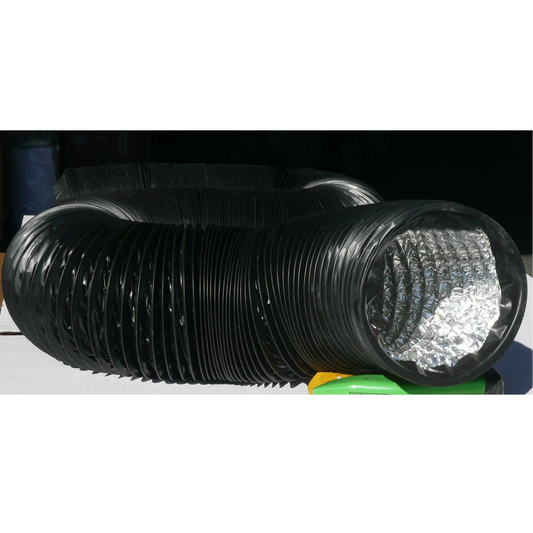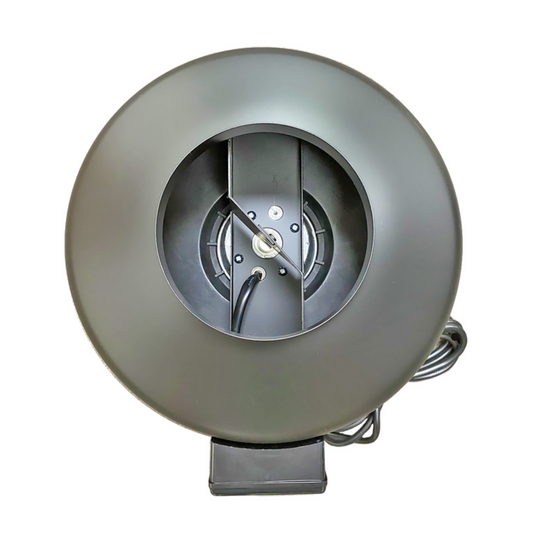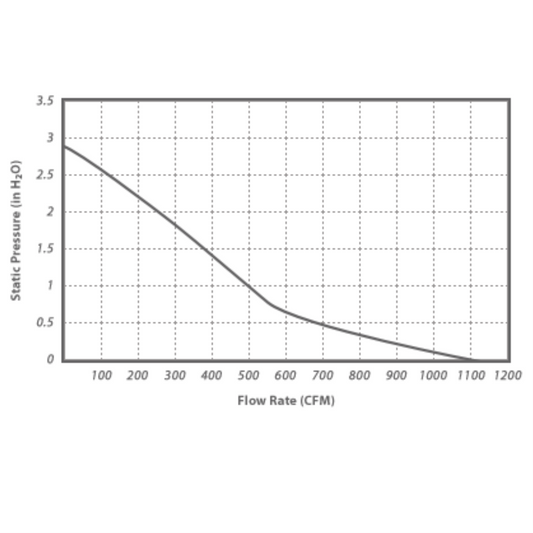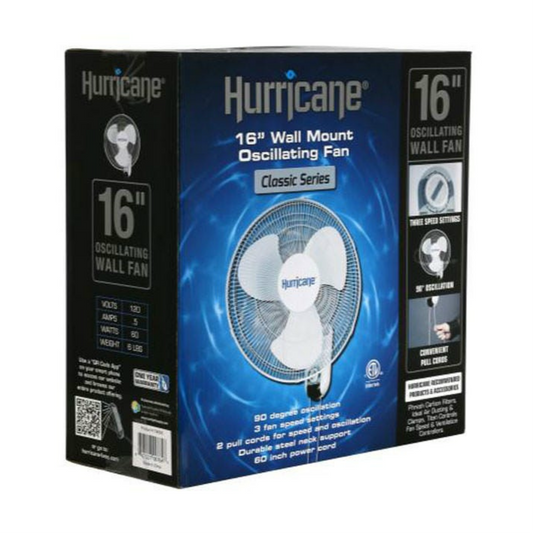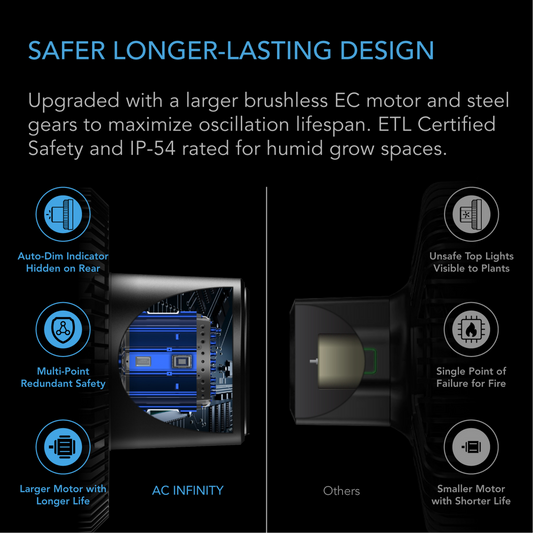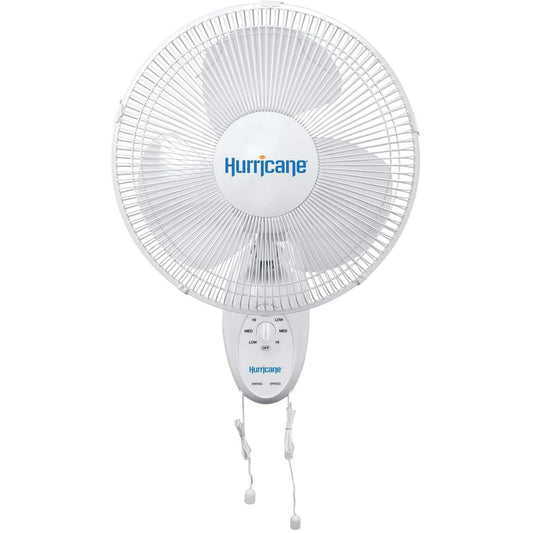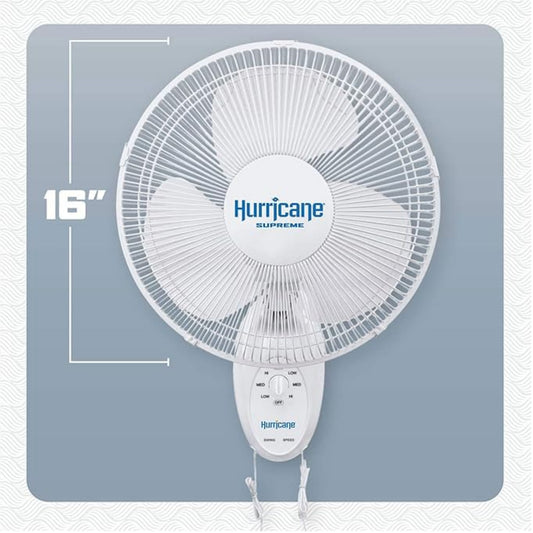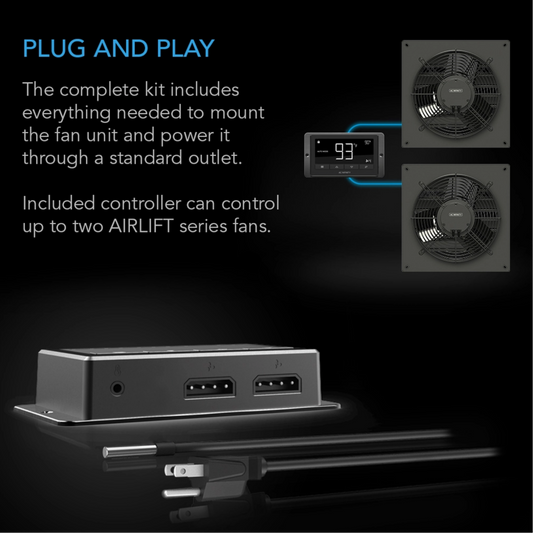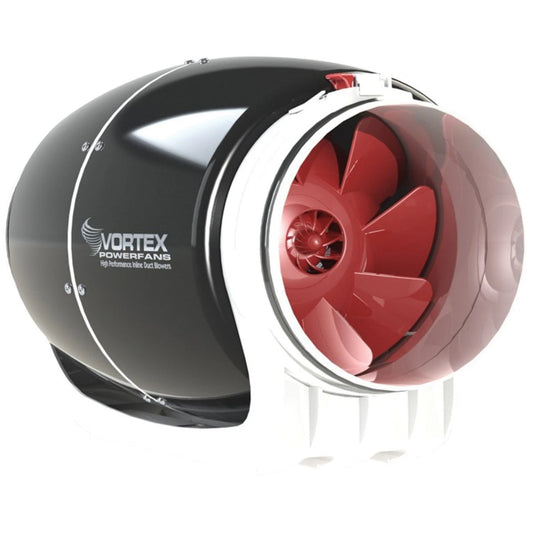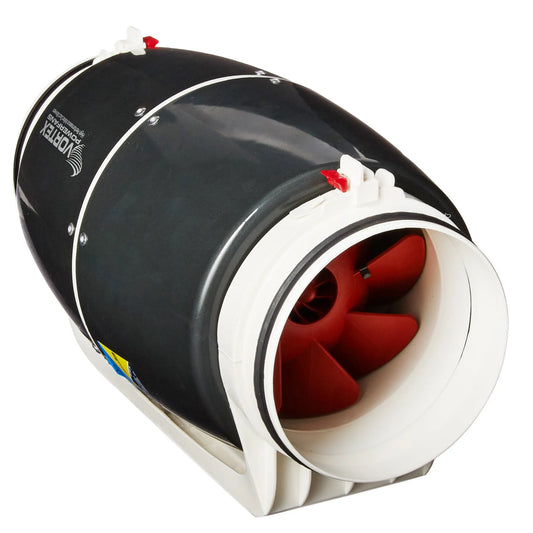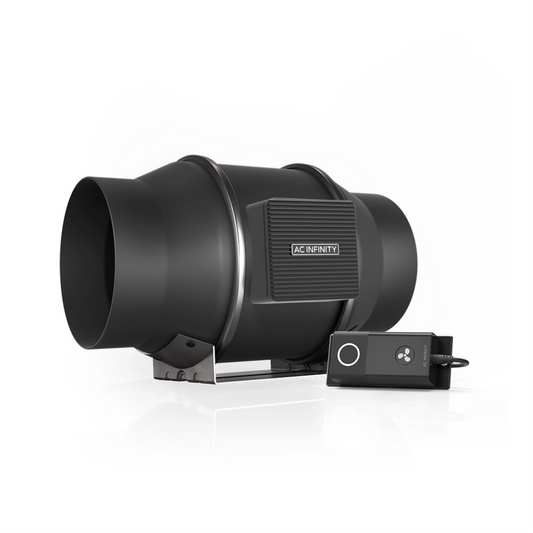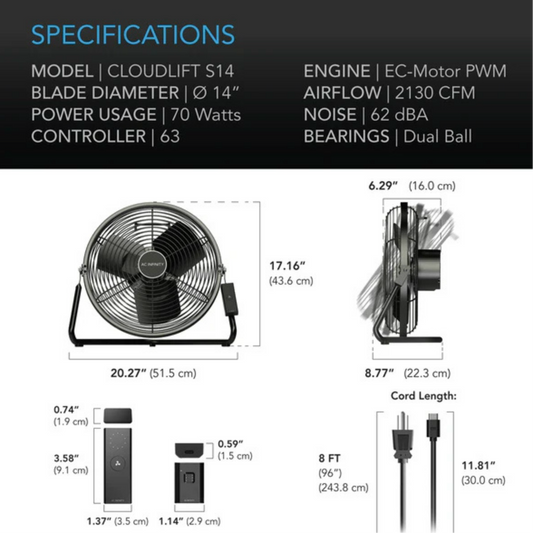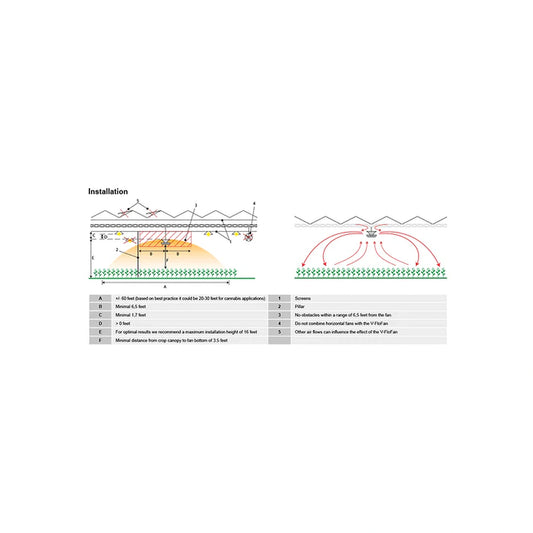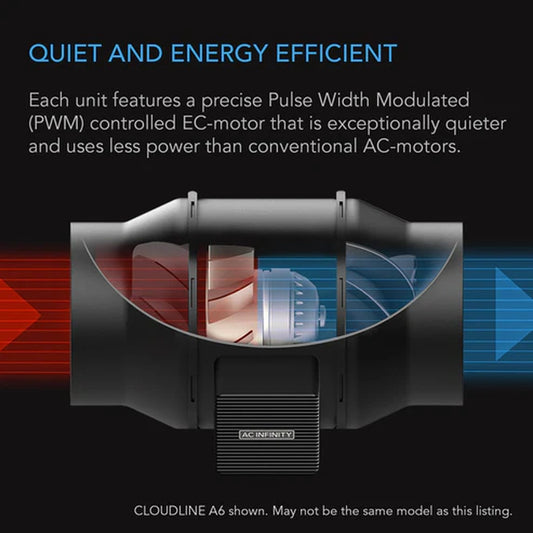Fans + Air Movers
Maximize airflow and climate stability with high-performance fans and air movers for greenhouses, indoor farms, and vertical systems. From oscillating fans to inline duct solutions, dial in even circulation, better VPD control, and healthier plants for consistent, high-quality harvests.
-
Common Culture Black Lightproof Ducting w/Clamps
Vendor:Common CultureRegular price From $5.80 USDRegular priceUnit price / perCommon Culture Black Lightproof Ducting w/Clamps
Regular price From $5.80 USDRegular priceUnit price / perCommon Culture Black Lightproof Ducting w/Clamps
Regular price From $5.80 USDRegular priceUnit price / per -
Common Culture Carbon Filter 6in x 16in + 6in Inline Duct Fan Combo
Vendor:Common CultureRegular price $168.08 USDRegular priceUnit price / per -
Common Culture Stealth In-Line Duct Exhaust Fan
Vendor:Common CultureRegular price From $50.89 USDRegular priceUnit price / perCommon Culture Stealth In-Line Duct Exhaust Fan
Regular price From $50.89 USDRegular priceUnit price / perCommon Culture Stealth In-Line Duct Exhaust Fan
Regular price From $50.89 USDRegular priceUnit price / per -
Common Culture Carbon Filter 4in x 12in + 4in Inline Duct Fan Combo
Vendor:Common CultureRegular price $132.47 USDRegular priceUnit price / per -
Vortex Powerfans VTX Series Inline Fan | 12 inch | 1140 CFM
Vendor:Vortex Power FansRegular price $424.60 USDRegular priceUnit price / per -
Hurricane 16in Wall Mount Fan - Classic Series
Vendor:Hurricane FansRegular price $35.71 USDRegular priceUnit price / per -
AC INFINITY CLOUDRAY S6, Gen 2 Grow Tent Clip Fan 6” with Long-Life EC Motor, 10-Level Dynamic Wind Modes & Fan Speeds, 10-Level Auto Oscillation
Vendor:AC InfinityRegular price $59.99 USDRegular priceUnit price / per$59.99 USDSale price $59.99 USD -
Hurricane Wall Mount Fan Supreme Series - 16 in
Vendor:Hurricane FansRegular price $37.14 USDRegular priceUnit price / per -
AC Infinity AIRLIFT T-Series, Shutter Exhaust Ventilation Fan with Temperature and Humidity Controller
Vendor:AC InfinityRegular price From $179.00 USDRegular priceUnit price / per$179.00 USDSale price From $179.00 USDAC Infinity AIRLIFT T-Series, Shutter Exhaust Ventilation Fan with Temperature and Humidity Controller
Regular price From $179.00 USDRegular priceUnit price / per$179.00 USDSale price From $179.00 USDAC Infinity AIRLIFT T-Series, Shutter Exhaust Ventilation Fan with Temperature and Humidity Controller
Regular price From $179.00 USDRegular priceUnit price / per$179.00 USDSale price From $179.00 USD -
Vortex S-Line Ultra Quiet Fan 6 inch 347 CFM
Vendor:Vortex Power FansRegular price $255.13 USDRegular priceUnit price / per -
AC Infinity CLOUDLINE S-Series - Duct Fan /w Inline Speed Control
Vendor:AC InfinityRegular price From $89.99 USDRegular priceUnit price / per$89.99 USDSale price From $89.99 USDAC Infinity CLOUDLINE S-Series - Duct Fan /w Inline Speed Control
Regular price From $89.99 USDRegular priceUnit price / per$89.99 USDSale price From $89.99 USDAC Infinity CLOUDLINE S-Series - Duct Fan /w Inline Speed Control
Regular price From $89.99 USDRegular priceUnit price / per$89.99 USDSale price From $89.99 USD -
Vortex S-Line Ultra Quiet Fan 8 inch 711 CFM
Vendor:Vortex Power FanRegular price $353.86 USDRegular priceUnit price / per -
AC Infinity CLOUDLIFT Floor Wall Fan with Wireless Controller
Vendor:AC InfinityRegular price From $189.00 USDRegular priceUnit price / per$189.00 USDSale price From $189.00 USDAC Infinity CLOUDLIFT Floor Wall Fan with Wireless Controller
Regular price From $189.00 USDRegular priceUnit price / per$189.00 USDSale price From $189.00 USDAC Infinity CLOUDLIFT Floor Wall Fan with Wireless Controller
Regular price From $189.00 USDRegular priceUnit price / per$189.00 USDSale price From $189.00 USD -
Vostermans Ventilation Multifan V-Flo Fan V2.0 (1-Phase 110v/120v 3050 CFM)
Vendor:MultifanRegular price $599.99 USDRegular priceUnit price / per -
Can-Fan Max Fan Pro Series 6 in - 420 CFM
Vendor:Can Fans & FiltersRegular price $232.64 USDRegular priceUnit price / per -
Air Filtration Kit 6", Inline Fan with Speed Controller, Carbon Filter & Ducting Combo
Vendor:AC InfinityRegular price $199.00 USDRegular priceUnit price / per$199.00 USDSale price $199.00 USD
Fans + Air Movers
For Greenhouses, Indoor Farms & Vertical Systems
Boost airflow, stabilize climate, and protect your crop with high-performance fans and air movers engineered for controlled environment agriculture. This collection from GrowersHouse delivers uniform circulation to reduce hotspots, balance temperature and humidity, and lower disease pressure—helping roots uptake nutrients efficiently and canopies stay vigorous. With energy-efficient EC motors, quiet operation, and durable housings, our grow room fans, inline duct fans, oscillating fans, and air movers keep your environment consistent while reducing operating costs....
Why Choose Our Fans + Air Movers
Key Benefits
- Even air distribution to prevent microclimates and mold
- Better VPD control for reliable growth
- Fewer hotspots around LEDs and HVAC
- Energy-saving EC/variable-speed options
- Built for humid, 24/7 cultivation environments
Best Uses
- Canopy circulation in multi-tier racks
- Intake/exhaust support for climate stability
- Under-bench and under-canopy movement to dry leaves/media
- Targeted airflow during transplant and late flower to reduce moisture
Types in This Collection
- Oscillating Fans: Wall/pole fans sweep air gently across canopies for uniform gas exchange.
- Inline Duct Fans: High-static units move air through filters and duct runs to manage temps and odors.
- Air Movers (Blowers): Low-profile, directional airflow for drying wet zones and pushing air under racks.
- High-Velocity Floor/Box Fans: Quick mixing of room air to erase thermal layers.
- EC & Speed-Controlled Models: Fine-tune CFM, reduce noise, and save power with precise dial-in.
How Fans + Air Movers Help Growers
Consistent airflow improves transpiration and CO₂ exchange, supports stable VPD, and keeps leaf surfaces dry—reducing disease risk and improving nutrient transport. Dialed-in circulation protects fixtures, evens out PPFD across the canopy, and helps HVAC work more efficiently, translating to healthier plants and higher, more uniform yields.

Frequently Asked Questions
Is an air mover better than a fan?
They solve different problems. An air mover (centrifugal blower) produces strong, directional airflow to dry specific areas (floors, under benches, tight aisles). A traditional fan is better for broad, gentle circulation across the canopy. Many facilities use both: fans for continuous mixing, air movers for targeted tasks.
How big of an air pump do I need for hydroponics?
A practical guideline is to provide roughly 0.5–1.0 liters per minute (LPM) of air per gallon of nutrient solution, split across multiple air stones for even diffusion. Deep reservoirs, long lines, and finer stones need more output and pressure—always check the manufacturer’s chart and upsize 20–30% to account for line losses.
Does putting a fan on plants help them grow?
Yes—gentle, continuous airflow strengthens stems, improves gas exchange, and keeps leaf surfaces dry, which lowers disease pressure. Avoid blasting plants directly; aim for a light rustle. Too much wind can cause stress or “windburn.”
What is the difference between a fan and an air mover?
Fans (oscillating, floor, wall) move larger volumes of air with broader coverage for mixing and canopy circulation. Air movers are compact blowers that focus airflow in a tight stream to dry spots or push air through confined spaces like under racks or along floors.
How to properly ventilate a grow room?
Combine inline exhaust (often with a filter) and a passive/active intake for air exchange, then add oscillating fans to mix air at the canopy. Maintain slight negative pressure, minimize duct bends, and place fans so all leaves gently move. Use speed controllers or EC fans to fine-tune temperature, humidity, and VPD without over-drying.
How much airflow does a grow room need?
As a rule of thumb, size exhaust so the room’s volume exchanges every 1–3 minutes: CFM ≈ (Room Volume in ft³) ÷ (Minutes per Exchange). Add 20–40% capacity for filters, long duct runs, and elbows. Circulation fans should create uniform leaf movement across the entire canopy with no dead zones.


